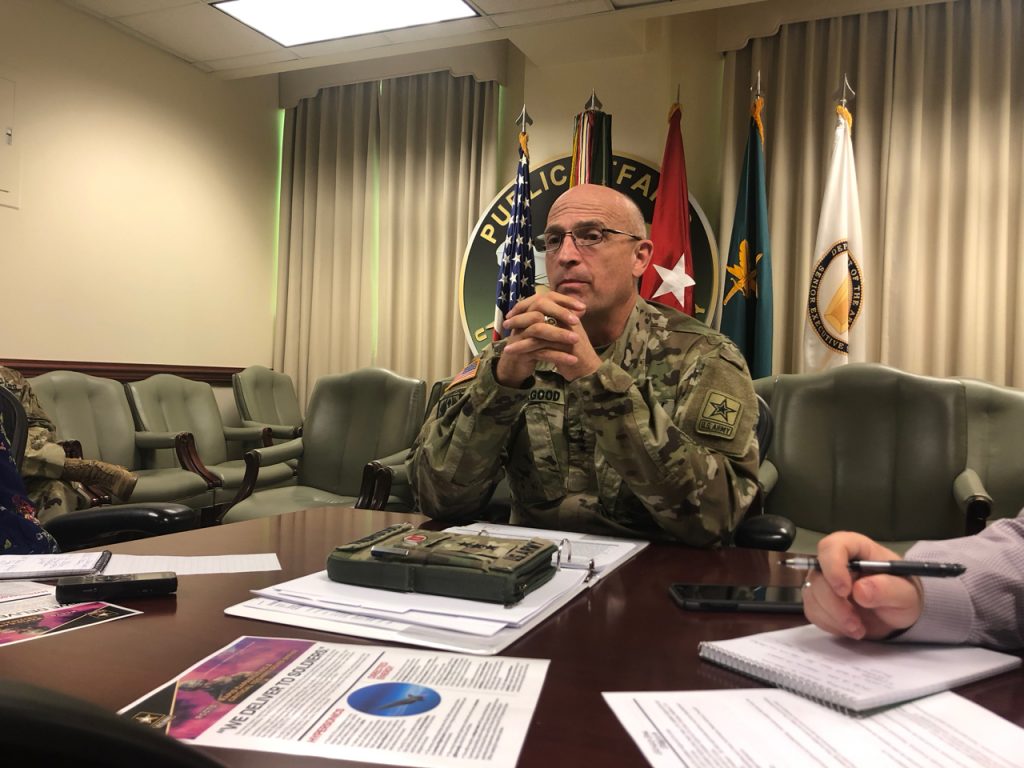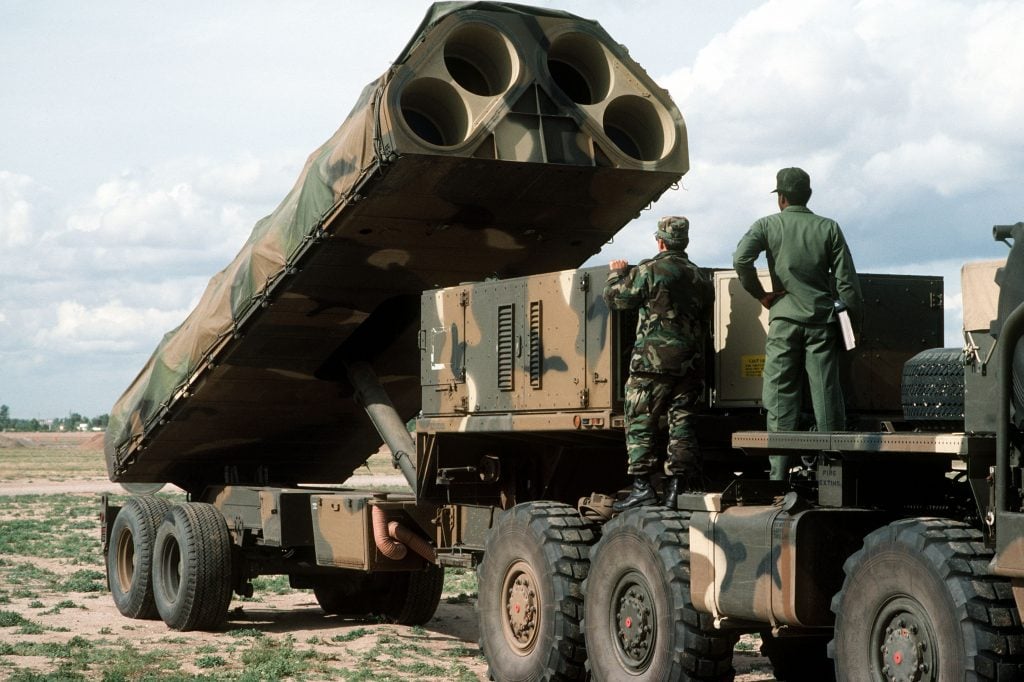
Lt. Gen. Neil Thurgood
WASHINGTON: The Army has asked Congress to rapidly reallocate 2020 funding so the service can jumpstart its latest long-range weapon, Lt. Gen. Neil Thurgood tells me. The pending reprogramming request would launch the new intermediate-range missile the service revealed last month so the Army can rush prototypes into service by late 2023, filling a gap Army strategists identified in their ambitious family of missiles already in development.
To meet that deadline, “there’s not time for a new invention,” said Thurgood, whose Rapid Capabilities & Critical Technologies Office (RCCTO) will develop the new missile, alongside its ongoing hypersonics program. “So we’re going have to take something and … modify it.” The service has studied a wide range of existing missiles – both US and allied, both ballistic and cruise – but he wouldn’t say which it was likely to pick.
At least we know now what to call the hitherto nameless weapon: In a classic Army move, it’s now blandly designated the Mid-Range Capability.
Now, “mid-range” here means “around 1,800 kilometers” (about 1,100 miles), Thurgood told me. That’s the most specific number we’ve heard from the service so far. That 1,800 km means MRC could shoot six times as far as the longest-range missile the Army has today, the Reagan-era ATACMS, which maxes out at about 300 km (ca. 185 miles).

One potential model for the Army’s Mid-Range Capability: The Air Force’s BGM-109G Ground-Launched Cruise Missile (GLCM) was a Navy BGM-109A Tomahawk modified to fire from a Transporter-Erector-Launcher (TEL) truck.
But a thousand miles really is just “mid-range” in the context of the Army’s portfolio of future Long-Range Precision Fires, its No. 1 modernization priority. The Mid-Range Capability will slot in between the Precision Strike Missile (PrSM), a 500-plus-km (310+ mile) replacement for the aging ATACMS, and the Long-Range Hypersonic Weapon (LRHW), whose classified range is in the thousands of kilometers.
MRC is playing catch-up because PrSM and LRHW are already in flight tests, with prototypes set to enter operational service in 2023. ’23 will also see the first fielding of Extended Range Cannon Artillery (ERCA), which doubles the range of current howitzers to more than 65 km (40+ miles).
By contrast, Army leaders only decided they needed the Mid-Range Capability in July, Thurgood said, at which point they immediately began informal discussions with the Hill. The service is in a hurry to get started, using funds appropriated but not yet spent for fiscal year 2020 – which has already ended.
The issue isn’t whether Congress supports the program, Thurgood said: The classified briefings and discussions with all four committees of jurisdiction (House and Senate Armed Services, House and Senate Appropriations) have “all gone very well.” Instead, he told me, “it’s really a question of timing. It’s just really hard to make those changes so late in the year.”
How much is the Army asking for? Thurgood wouldn’t say, preferring to defer to Congress on announcing any numbers. But he did tell me the starting point was the money already appropriated for a cancelled predecessor program, the Mobile Medium-Range Missile, for which Congress voted $5 million in 2020 funding. (Budget rules allow R&D funds to be spent in the year they’re appropriated for or the year after, since such programs take time to get going). But that $5 million won’t be enough to launch MRC, so the service is seeking what’s called an Above Threshold Reprogramming (ATR) for additional funds in 2020, as well as an adjustment to the (overdue) 2021 appropriations bill that Congress is still thrashing out.
There’s no free lunch here for the Army, Thurgood emphasized: Every dollar it’s asking to add to MRC must come from some other weapon.
“The Army has to find internal billpayers,” he said. “There’s no free money out there.”






















